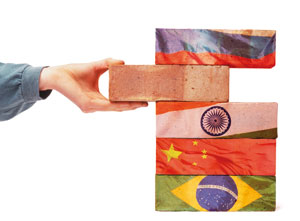You are currently browsing the category archive for the ‘Debts’ category.
Research exploring the link between the credit crunch, trade credit and export horticulture in previous financial crises, shows that sharp falls in the availability of trade finance did cause problems for exporters – for example, Indonesia during the East Asian financial crisis of 1997, as international lenders withdrew from markets perceived as risky, to reduce their exposure.
However, in today’s economic climate, research is ‘lacking hard evidence‘ to confirm that declines in world trade are linked to trade financing.

In recent research carried out by John Humphrey, where he surveyed 30 African export firms, none reported trade finance problems, despite the WTO warning of ‘substantial falls in trade credit, increasing lending costs and credit rationing’ in the context of today’s financial climate:
‘As of February/March 2009, very few of these firms faced any problems with respect to the availability of trade finance. What explains this finding? One factor was the resilience of the domestic banking system. Firms reported that credit in general is available from domestic banks as long as firms showed themselves to be creditworthy. Horticulture firms are considered good risks by local banks, so they did not have problems accessing finance.’
In addition to being regarded as ‘good risks’ by domestic banks, many horticultural firms benefit from inter-company credit, between exporters and producers for example and this lessens their direct reliance on the domestic banking system.
Nevertheless, these conclusions cannot be applied to the whole of the developing world, or indeed blanketedly to Africa. In South Africa, for example, it is thought that some exporters and producers of citrus fruits have been hard hit by ‘bad debtors’. Humphrey also argues that anecdotal trends in Latin America and the Caribbean, show that exporters are suffering as banks withdraw their credit. In addition the recession is thought to be having an impact on small-traders and co-operatives who don’t necessarily have the trade ties to access inter-company credit.
Despite the incomplete conclusions about trade finance and its impact on trade, initial results for the first quarter of 2009 show that the recession is taking its toll on exports, as trade falls. Results recently published by USAID and the HCDA in Kenya, report a 17% decrease in horticulture export quantities in January, a 16% decrease in February and a 10% decrease in March. This translates to even stronger figures in terms of value, with a 32% decrease in $US earned through horticultural exports in January, a 26% decrease in February and a 16% decrease in March. This undoubtedly is having an effect on employment. One Kenyan source suggests that two major flower companies have laid off over 800 people between them, with more job losses to follow. In addition some Asian vegetable exporters have ceased to operate, and so called ‘briefcase’ exporter have stopped trading – this is regarded as a sign in the industry that the market is suffering.
As the horticultural sector starts to feel the pinch, suppliers are also affected in terms of the costs of seeds, fertilisers, protective clothing, transport, irrigation, and other inputs. Also, because cash flow on farms is tight, suppliers often receive late payments, exacerbating the situation.
The loss of earnings from horticulture will have nationwide repurcussions for many countries- in Kenya, for example, 80% of the population is reliant on horticulture for their livelihoods and as jobs are lost and incomes fall, so will the purchasing power fuelled by export horticulture, creating a ‘ripple’ effect throughout the entire economy. In some ways the recession is highlighting more than ever, the benefits of sustainable trading relationships between retailers in the developed world, importers, exporters, and producers in the developing world.
The recession has drawn the aid debate into even sharper focus as ‘cash strapped’ governments in the West pledged to continue giving aid – G20 leaders agreed at last month’s summit London that an extra $50bn would be needed to assist the developing world through the global economic crisis.
Today’s global financial pressures place ever-heavier emphasis on the need for Aid to work, and the rising popularity of Zambian economist Dambisa Moyo has giving fuel to the debate of whether Aid should exist at all – the debate has raged between Moyo and Jeffry Sachs in particular. Moyo argues that Aid achieves the opposite of its desired effect, encouraging dependency, corruption and stifling enterprise and innovation:
“With aid’s help corruption fosters corruption, nations quickly descend into a vicious cycle of aid. Foreign aid props up corrupt governments – providing them with freely usable cash. These corrupt governments interfere with the rule of law, the establishment of transparent civil institutions and the protection of civil liberties, making both domestic and foreign investment in poor countries unattractive.”
She argues that the success stories used to support those who are pro aid-giving vary hugely from the African countries still receiving aid today – notably the aid the ‘success stories’ received was smaller in amount and shorter in duration – they then moved on to adopt market-based, job-creation strategies. Holman, former Africa editor of the Financial Times argues that aid diminishes the role and responsibility of the State to its citizens – the basic contract between a citizen and the State breaks down as the State fails to deliver basic services – roads, water, schools and clinics – within the context of an aid-dependent state, these services are better delivered by a third party, such as an NGO.
Moyo and Holman make some very valid points and for countries who rely heavily on aid, adopting new financing and development strategies and ‘weening’ themselves off aid in the long-term can only be a good thing. However, Moyo’s argument can also be taken at face-value and very simplistically and misused, without more detailed understanding of the nuances of her argument and of the different forms of aid and the circumstances in which it is needed and can work. We can ill-afford to desert the poorest who can only be worse-off as a result of the financial crisis and who are in need of basic social protection.
Steve Radelet, senior fellow at the Center for Global development in Washington, poses some solutions in ensuring aid is used in the right way:
- Be more selective. Africa is not a monolithic entity. More aid should go to countries that can use it well, especially the emerging democracies that are implementing sensible economic policies.
- Set clear goals, set them publicly, and measure results with independent monitors.
- Streamline bureaucracies and make sure a larger share of funds gets to those that need it most.
- Listen more. Ask Africans – government officials and ordinary citizens – what they need most and how programs can best be implemented both to achieve immediate goals and build capacity over time.
Nudging – a relatively recent buzzword, involves slightly changing the playing field to make it easier for us, or more tempting for us as so called ‘rational economic agents’, to make changes to the way we act, without us feeling any pressure or force to do so, as we might through official legislation. Choice is maintained – we can still do the opposite, but it becomes more attractive for us to make choices that indirectly, but very purposefully, have positive impacts for the environment or society – or most commonly practised for the benefit of businesses. A business example is a magazine subscription. If your subscription continues automatically for the next year without you having to actively renew it (such that you have to ‘opt out’ rather than ‘opt in’) larger subscription rates are achieved than in a scheme where you have to make the effort to sign up to each year.
Another example of a nudge might be the idea of ‘framing’. For example, people told that an ice-cream is ’90 per cent fat-free’ are far more likely to agree to a second scoop than those who are told it contains ’10 per cent fat’. Thus a business might sell more if it frames facts in the right way. This can also be put to more meaningful uses.
The book ‘nudge’ is co-authored by Richard Thaler, a professor of economics and Cass Sunstein a professor of jurisprudence, who were both at the University of Chicago when the book was written. The idea is that nudging takes a ‘third way’ between proponenants of interventionism and those of ‘Laissez faire’.

Thaler and Sunstein use behavioural economics ‘to justify their belief that nudging is truly liberating rather than manipulative or coercive; that is to say, nudges are devices to overcome the unreliable rules of thumb or irrational biases that inhibit us from acting on our own genuine preferences, and are not instruments to make us realise the preferences of others’ (Kerr, 2008).
For the environment, nudges might involve charging a small fee for plastic bags at the supermarket or not having an infinite amount of bags available at the end of a check out. Instead you have to ask the till assistant to give you each bag you require. It might involve having smaller bins to cut down on the amount of rubbish people throw away or having smart energy meters that compares your energy usage to your neighbours. The options are almost endless.
For the economy ‘nudges’ are also thought to be particularly relevant in a recession and to the current banking crisis: ‘This is because, unlike conventional economists, Thaler and Sunstein accept that people act irrationally and banking reform has to be based on the acceptance that markets are irrational too. ‘ As George Osborne from the Conservatives argues:
‘Markets can behave irrationally. The people who make up markets can behave irrationally. This isn’t a failure of capitalism, it is a feature of capitalism’ (The Guardian).
Mr. Thaler believes that carefully applied nudges might help ameliorate some of the problems that led to the financial crisis. However, according to the New York Times ‘some nudges need to be more forceful than others. For example, rigorous public disclosure of leverage (the ratio of debt to capital) would be a burden. But it might be necessary to induce the people who run hedge funds, insurance companies and big banks to behave more sensibly.’ Greater disclosure might allow people to make wiser choices.
Thaler is a fan of electronic disclosure and uses the example of credit cards to show how this might work:
‘Once a year your credit card provider would have to send you two electronic files. The first would be essentially a spread sheet that characterized every way in which the provider can charge you for something, from late payments, to interest rate changes, to charges for currency exchanges. The second file would just be a list of everything you did in the past year that incurred a charge. We predict that Web sites would quickly emerge to translate and evaluate these files so consumers would understand how they were being charged and what they did to incur charges. The web sites would also provide information on alternative suppliers that would be better given the customer’s usage.’
Could ‘nudging’ be the future of sustainable economic growth that avoids future economic crises and makes headway towards environmental progress? Obama and the Tories certainly seem to think so……
The video below from BBC’s Newsnight is an example of just some of the debates raging over the impacts of the recession on ’emerging economies’ and whether the notion of ‘decoupling’ still holds true in an increasingly globalised world. It argues that the impacts of the recession may be minimal for China and India when compared to the West and will neither exacerbate the crisis in the West nor will it help lift the West out of a crisis. However their global growth rates will improve how the global economy looks as a whole. It argues that the way in which the global economy is governed and how economies interact with one another will need to be significantly re-organised. The move from G8 to G10, including India and China is ‘long overdue’ and the balance of power is shifting. China and India and other emerging economies need to be better represented in the global economic system.Vodpod videos no longer available.
A report published by Euromonitor in November last year argued that the theory of ‘decoupling’ – an economy that is able to grow, regardless of the economic pressures surrounding it – for the so called BRIC economies (Brazil, Russia, India and China) had proved wrong, as ‘the financial meltdown sent stock markets in the BRIC economies tumbling‘. Many economists have debated whether the BRIC economies will follow the US’ gloomy path into economic meltdown as a result of their highly interconnected economies or whether the BRIC economies could emerge from the crisis unscathed.

A major consequence of a globalised world, is that the impacts of the recession are also likely to be global. The BRIC economies have increasingly come to depend on foreign markets as consumers of their exports. Euromonitor predicts that Brazil and China will see weaker demand from the USA and Europe for their exports and India’s service sector will also suffer. Falling energy prices will impact Russia, being a country heavily dependent on oil for its GDP. According to the BBC ‘Russia has failed thus far to use revenues from oil to develop the economy to support growth now the commodity price for oil is falling. it has failed to develop a broad base of small businesses that can help Russia’s economy grow from another quarter.’ Russia’s economy is therefore heavily exposed to falling oil and energy prices and may be unable to sustain growth from other sources.

However, BRIC economies have ‘large trade surpluses and foreign exchange reserves that make them more resilient to the crisis’. Additionally, the growing middle classes in these economies and their increasing purchasing power will help to shore up economic growth. ‘The crisis is also expected to remove the danger of inflation making life easier for BRIC consumers and allowing governments to ease interest rates, fuelling further growth.’ According to Newsweek, for example, China’s retail sales grew by 15% in February this year. The article predicts that the BRIC economies will together be larger in dollar terms than the original G7 by 2027. The date for this milestone achievement has even been brought forward by the author of this article – such is his firm belief that domestic demand in those economies are proving that the notion of decoupling ‘is alive and well’.
Despite the fact that the BRIC economies may not be as badly affected by the crisis as the West, they are by no means completely immune. And where these economies are affected the West may also see consequent negative knock-on effects. This is the flip side of an economy in which decoupling is not as relevant as we might have hoped in today’s economic climate.
As cheap imports from China fall as a result of closing Chinese factories and global demand, the era of falling product prices for the West will be over. Our spending has been funded largely be foreign money which is drying up due to the recession. Western companies and pension funds are global companies, investing in these emerging economies. It was hoped that that the BRICs could be a cushion for the western world and we might be able to export our way out of the recession. Some economists argue that ‘it is clear that this is no longer the case’.
Let us not forget that the BRIC economies are by no means wealthy by the standards of the West despite their recent history of significant growth and a global recession therefore bodes particularly poorly for the enduring levels of poverty that exist in these countries: ‘recession will be painful for millions even billions of the people in the BRIC countries – people who thought they were now in a world where they could feed their families. Our recession will mean they can’t’.
Predictions over the future of of microfinance vary between optimism and downright doom and gloom.
Inflation is thought to be the real criminal for any struggles Microfinance Institutions (MFIs) may face, leading to an increase in MFIs operating costs, leading to an extra burden on clients, most of whom are the poor. In addition MFIs may face difficulties as the cost of commercial borrowing rises – money is simply becoming more expensive. Some reports suggest that borrowing costs have risen by up to 4.5 % in some markets. Funding from development institutions like the World Bank’s International Finance Corporation (IFC) is likely to be stable but aid budgets are being cut and other sources are being threatened. Concerns are being raised over the refinancing of existing debt and reports by the IFC show that the share of borrowers 30 days delinquent on their loans has increased from 1.2% before the crisis to between 2% and 3% now. Although still low by most loan standards the Economist argues that ‘a prolonged credit crunch could make microfinance clients start to look more like those hapless subprime borrowers’.
However, Mohammed Yunus, Nobel Peace Prize winner, and founder of the famous Grameen Bank, argues that “we have not been touched in any way by the financial crisis. The simple reason is because we are rooted to the real economy – we are not paper-based, paper-chasing banking. When we give a loan of $100 behind the $100 there are chickens there are cows. It is not something imaginary“.

Some research suggests that microfinance is relatively safe from the downturn because it ‘performs differently to the mainstream’ and is ‘counter cyclical’ and is very different to the subprime loans that some critics have compared microfinance to. This is because it lends small sums of money to people in the developing countries so start small, profitable businesses not overpriced homes. Indeed ‘many of those businesses serve local needs which has more merit at a time when exports are collapsing’. The Economist argues that the Microfinance industry is ‘sub-par but not sub-prime’.
